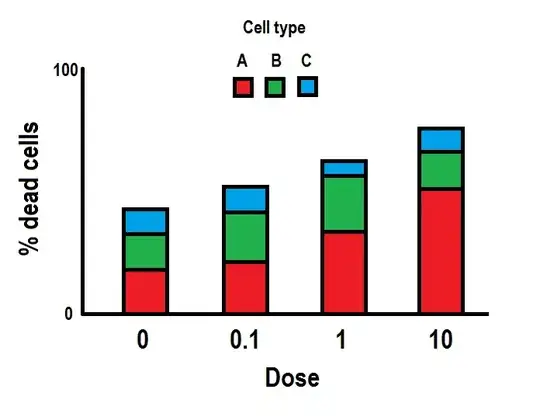I am not a statistician. But I've ended up working on a product that needs some statistics. Hopefully I can explain my question well enough.
Let's say I run a store that sells shirts. Small, Medium, Large, Extra Large, and Extra Extra Large. S, M, L, XL, and XXL. And I sell all different shirts. Red ones, blue ones, all sorts of colors.
For the entire store, I track which sizes are selling. So data something like this:
S: 15%
M: 50%
L: 20%
XL: 10%
XXL: 5%
And I also have that data for each color of shirt. Blue shirts sell 20% small, 60% medium, ect.
What I want to accomplish is a graph like this:
Where each bar is a size. I want to be able to do these calculations for whatever color, or set of colors I want. The goal is to communicate if a shirt is (un)popular among certain sizes, compared to the average.
So basically, how do I compare two percentages in a way that can give me the length of that bar?
